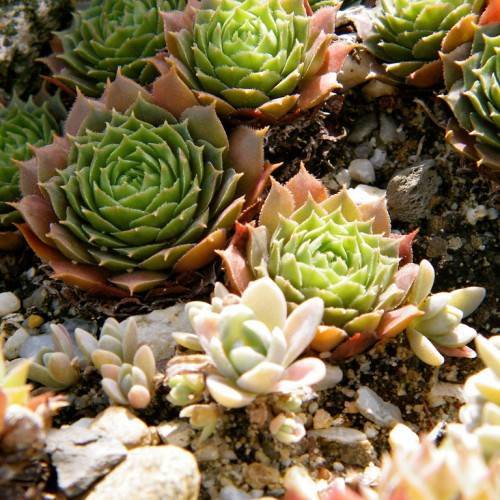
hens and chicks
Sempervivum (hybrid cvs.)
Also Known As - houseleekCycle:
Perennial
Watering:
Average
Hardiness Zone:
7
Sun:
Deep shade, Filtered shade
Soil:
Humus rich, Well-drained
Fruits:
Fruits Ready In Summer
Leaf:
Yes
Growth Rate:
Low
Maintenance:
Low
Drought Tolerant:
Yes
Salt Tolerant:
Yes
Care Level:
Medium
watering
Clubmoss should be watered when the top 1" of soil feels dry to the touch, typically every 5-7 days. Water with room temperature water at the base of the plant, saturating the soil enough to hydrate the roots. Allow the soil to drain and discard any excess water that remains in the tray or pot after a few minutes. Your clubmoss will benefit from weekly misting with a spray bottle.
sunlight
Clubmoss needs bright, indirect sunlight throughout the day. It requires at least 6-8 hours of sunlight per day to grow and thrive; more is better. If the sunlight is too bright and direct, it will burn the sensitive foliage, so make sure to place the plant in a spot where sunlight is filtered by a sheer curtain or lightly filtered through a south-facing window. Avoid direct afternoon sunlight during the summer, as this type of light can be too harsh for the plant.
pruning
Clubmoss (Selaginella kraussiana) generally doesn't require a significant amount of pruning. For the most part, simply trim away any discolored, dried, or damaged limbs and spent flowers with a pair of clean garden scissors. If you wish to maintain a more compact form, you can prune the plant back to the desired size, though this should only be done once a year, in the early spring before new growth occurs. Remember to make clean cuts and try to remove no more than 1-third of the plant at a time.
